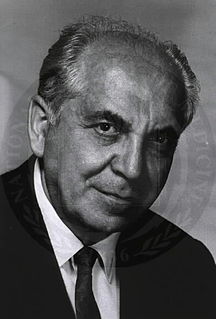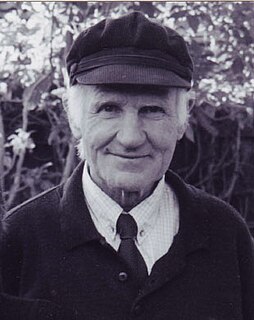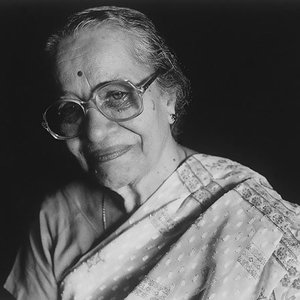
David Baltimore is an American biologist, university administrator, and 1975 Nobel laureate in Physiology or Medicine. He served as president of the California Institute of Technology (Caltech) from 1997 to 2006, and is currently the President Emeritus and Robert Andrews Millikan Professor of Biology at Caltech. He also served as president of Rockefeller University from 1990 to 1991, and was president of the American Association for the Advancement of Science in 2007. Baltimore has profoundly influenced international science, including key contributions to immunology, virology, cancer research, biotechnology, and recombinant DNA research, through his accomplishments as a researcher, administrator, educator, and public advocate for science and engineering. He has trained many doctoral students and postdoctoral fellows, several of whom have gone on to notable and distinguished research careers. In addition to the Nobel Prize, he has received a number of awards, including the U.S. National Medal of Science in 1999. Baltimore currently sits on the Board of Sponsors for the Bulletin of the Atomic Scientists and is a consultant to the Science Philanthropy Alliance.
Robert Joseph Huebner, was an American physician and virologist whose research into viruses, their causes and treatment that led to his breakthrough insights into the connections between viruses and cancer, leading to new treatments, as well as his hypothesized oncogene, which was discovered to be a trigger for normal cells turning cancerous.

Clarence Cook "C.C." Little was an American genetics, cancer, and tobacco researcher and academic administrator.

The Jackson Laboratory is an independent, nonprofit biomedical research institution dedicated to contributing to a future of better health care based on the unique genetic makeup of each individual. With more than 2,100 employees in Bar Harbor, Maine; Sacramento, California; and at a new genomic medicine institute in Farmington, Connecticut; the Laboratory's mission is to discover precise genomic solutions for disease and empower the global biomedical community in the shared quest to improve human health. The institution is a National Cancer Institute-designated Cancer Center and has NIH centers of excellence in aging and systems genetics.

The history of model organisms began with the idea that certain organisms can be studied and used to gain knowledge of other organisms or as a control (ideal) for other organisms of the same species. Model organisms offer standards that serve as the authorized basis for comparison of other organisms. Model organisms are made standard by limiting genetic variance, creating, hopefully, this broad applicability to other organisms.
Risk factors for breast cancer may be divided into preventable and non-preventable. Their study belongs in the field of epidemiology. Breast cancer, like other forms of cancer, can result from multiple environmental and hereditary risk factors. The term "environmental", as used by cancer researchers, means any risk factor that is not genetically inherited.

Ludwik Gross was a Polish-American virologist who discovered two different tumor viruses, murine leukemia virus and mouse polyomavirus, capable of causing cancers in laboratory mice.

Beatrice Mintz is an American embryologist who has contributed to the understanding of genetic modification, cellular differentiation and cancer, particularly melanoma.Mintz was a pioneer of genetic engineering techniques, and was among the first scientists to generate both chimeric and transgenic mammals.

James "Jim" Sutherland Lawson is an Australian public health doctor and scientist, known for research on breast cancer and for public health services and prevention programs, currently in use in Australian and international public health services.

Murine polyomavirus is an unenveloped double-stranded DNA virus of the polyomavirus family. The first member of the family discovered, it was originally identified by accident in the 1950s. A component of mouse leukemia extract capable of causing tumors, particularly in the parotid gland, in newborn mice was reported by Ludwik Gross in 1953 and identified as a virus by Sarah Stewart and Bernice Eddy at the National Cancer Institute, after whom it was once called "SE polyoma". Stewart and Eddy would go on to study related polyomaviruses such as SV40 that infect primates, including humans. These discoveries were widely reported at the time and formed the early stages of understanding of oncoviruses.

Kamal Ranadive, néeKamal Jayasing Ranadive was an Indian biomedical researcher who is known for her research in cancer about the links between cancers and viruses. She was a founder member of the Indian Women Scientists' Association (IWSA).
Joan S. Brugge is the Louise Foote Pfeiffer Professor of Cell Biology and the Director of the Ludwig Center at Harvard Medical School, where she also served as the Chair of the Department of Cell Biology from 2004 to 2014. Her research focuses on cancer biology, and she has been recognized for her explorations into the Rous sarcoma virus, extracellular matrix adhesion, and epithelial tumor progression in breast cancer.
Human mammary tumor virus (HMTV) is a B-type retrovirus that is closely related to the mouse mammary tumor virus (MMTV). The existence of this virus was suspected for decades but nucleotide sequences identifying a unique virus in human breast cancer tumors were not confirmed until 2001. Viral particles were isolated several years later. Evidence for a role of HTMV/MMTV in human breast cancer has recently been reviewed.
Breast cancer metastatic mouse models are experimental approaches in which mice are genetically manipulated to develop a mammary tumor leading to distant focal lesions of mammary epithelium. Recent ameliorations in maneuvering the mouse genome have provided the technology to induce mammary cancers in mice arising from genetic mutations that have been identified in human cancer. This means models can be generated based upon molecular lesions consistent with the human disease.
Janet S Butel is the Chairman and Distinguished Service Professor in the molecular virology and microbiology department at Baylor College of Medicine. Her area of expertise is on polyomavirus pathogenesis of infections and disease. She has more than 120 publications on pubmed. She also has 6 publications in Nature, which is considered one of the most prestigious science journals. She is a member of 9 different organizations and has 13 honors and awards.
Miriam Dorothy (Posner) Finkel was a radiobiologist who made significant contributions to molecular biology.
Lawrence Kilham, Lyme, New Hampshire was a physician, virologist, amateur ornithologist, and nature writer. He is credited as the discoverer of K virus (1952) and, with L. J. Olivier, Kilham rat virus (1959), the first protoparvovirus identified.

Shyamala Gopalan was an Indian-American cancer researcher and civil rights activist.
Rader. Karen A. Making Mice Standardizing Animals For American Biomedical Research 1900-1955 Princeton University Press (2004)

















